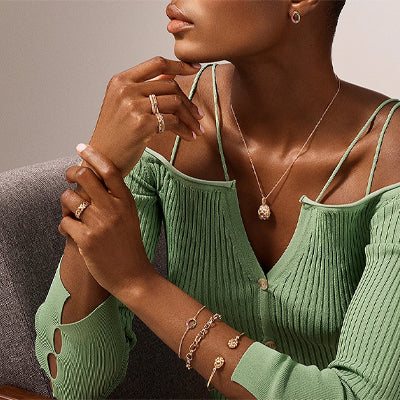The imperial eggs
The celebrated series of 50 Imperial Easter eggs was created for the Russian Imperial family from 1885 to 1916 when the company was run by Peter Carl Fabergé. These creations are inextricably linked to the glory and tragic fate of the last Romanov family. They were the ultimate achievement of the renowned Russian jewellery house and must also be considered the last great commissions of objets d’art . Ten eggs were produced from 1885 to 1893, during the reign of Emperor Alexander III; 40 more were created during the rule of his dutiful son, Nicholas II, two each year, one for his mother, the dowager, the second for his wife.
The series began in 1885 when Emperor Alexander III, through the intermediary of his uncle, Grand Duke Vladimir, commissioned an Easter egg from Fabergé as an Easter present for his wife, Empress Maria Feodorovna. Initially planned by Fabergé to contain a diamond ring, the actual finished version, following specific instructions of the Emperor, included a ruby pendant of great value. After the first commission, Fabergé was bestowed ‘goldsmith by special appointment to the Imperial Crown’, and the legend continued over the next 31 years. According to Fabergé family tradition, the company was given complete freedom for the future Imperial Easter Eggs. Not even the Emperor knew what form they would take. The only stipulation was that each one should contain a surprise.
The Imperial Eggs
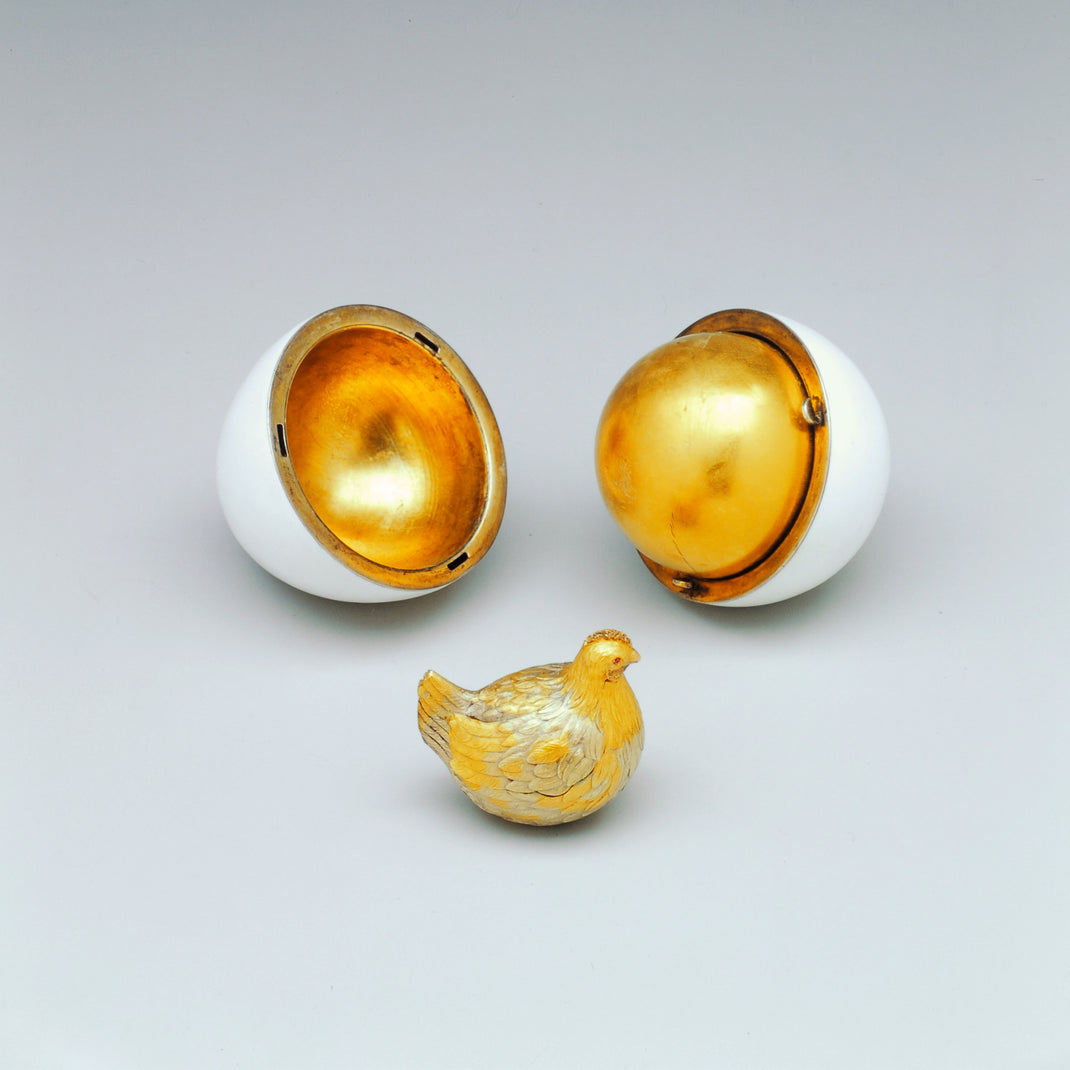
Image courtesy of the Forbes Collection
1885
The Hen Egg
Inspired by an 18th century original, the Hen Egg has an opaque white enamelled outer ‘shell’, opening with a twist to reveal a first surprise - a matt yellow gold yolk. This in turn contains an enamelled chased gold hen that once held a replica of the Imperial Crown with a precious ruby pendant egg within. The drop by itself cost more than half of the egg’s total price (both lost, being only known from an old photograph).
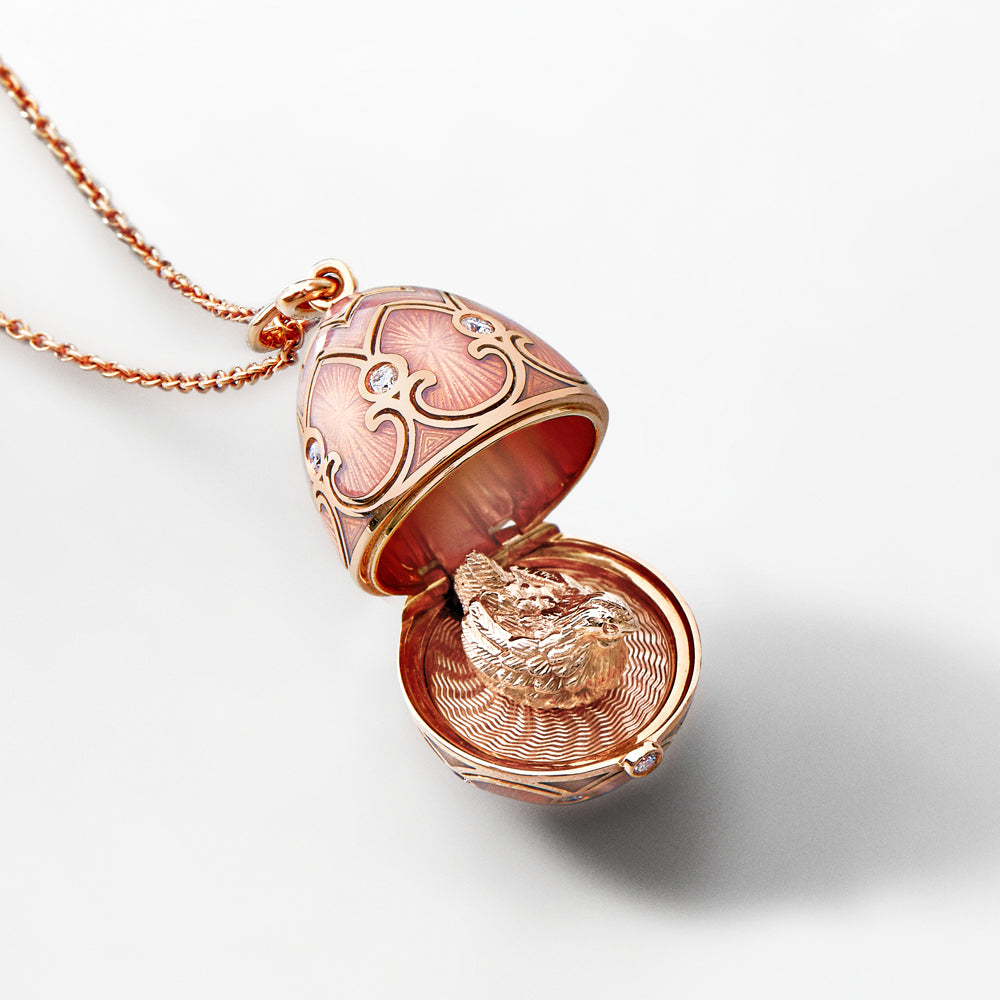
Heritage Collection
Heritage Hen Locket
The Heritage collection draws inspiration from Fabergé’s historical masterpieces. Traditional materials and complex traditional techniques, such as the delicate art of guilloché enamelling and hand-engraving, make up the signature elements of this colourful and opulent collection.
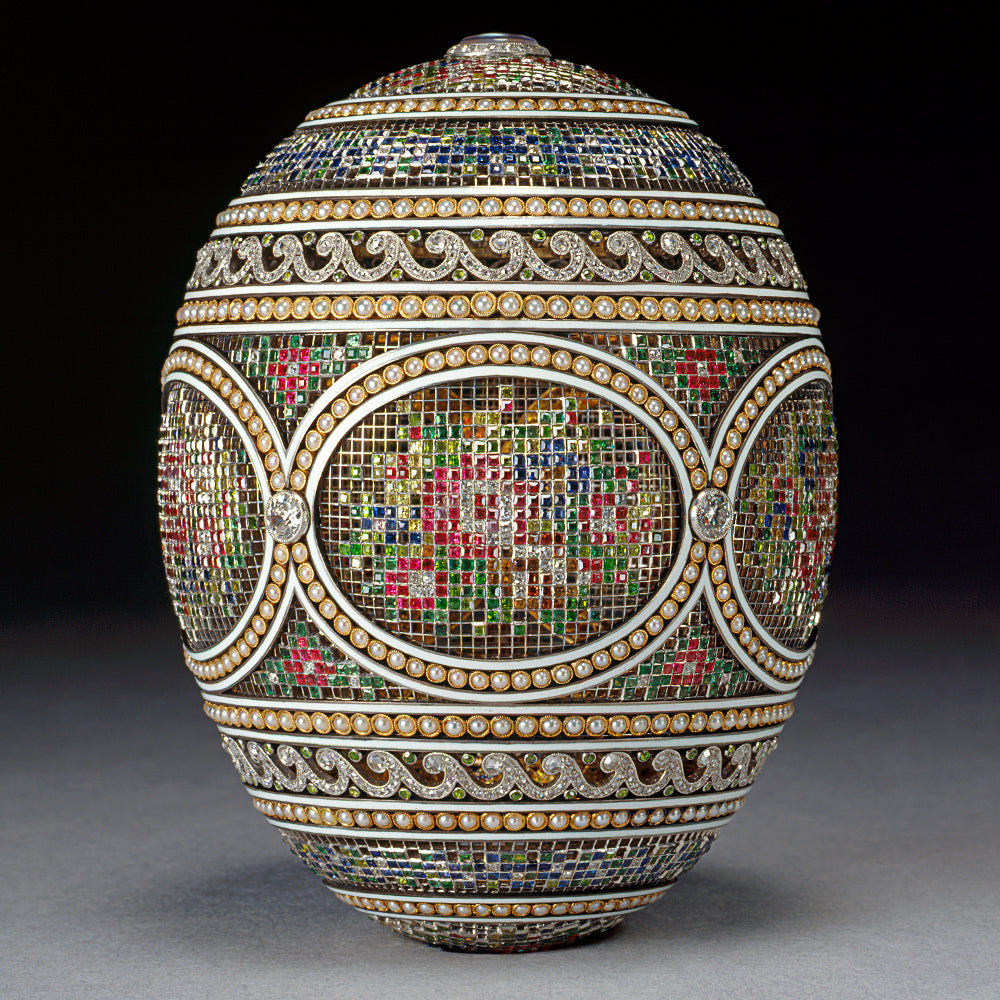
Image courtesy of the Getty Images
1914
The Mosaic Egg
The Mosaic Egg is a triumph of technical brilliance and artistic finesse. Commissioned by Tsar Nicholas II for Empress Alexandra, it features a delicate micro-mosaic of precious gems set in platinum to resemble petit point embroidery. Designed by Alma Theresia Pihl, the egg’s intricate beauty is matched by its heartfelt surprise—a miniature portrait of the imperial children—making it one of the most cherished treasures of the Imperial Fabergé collection.
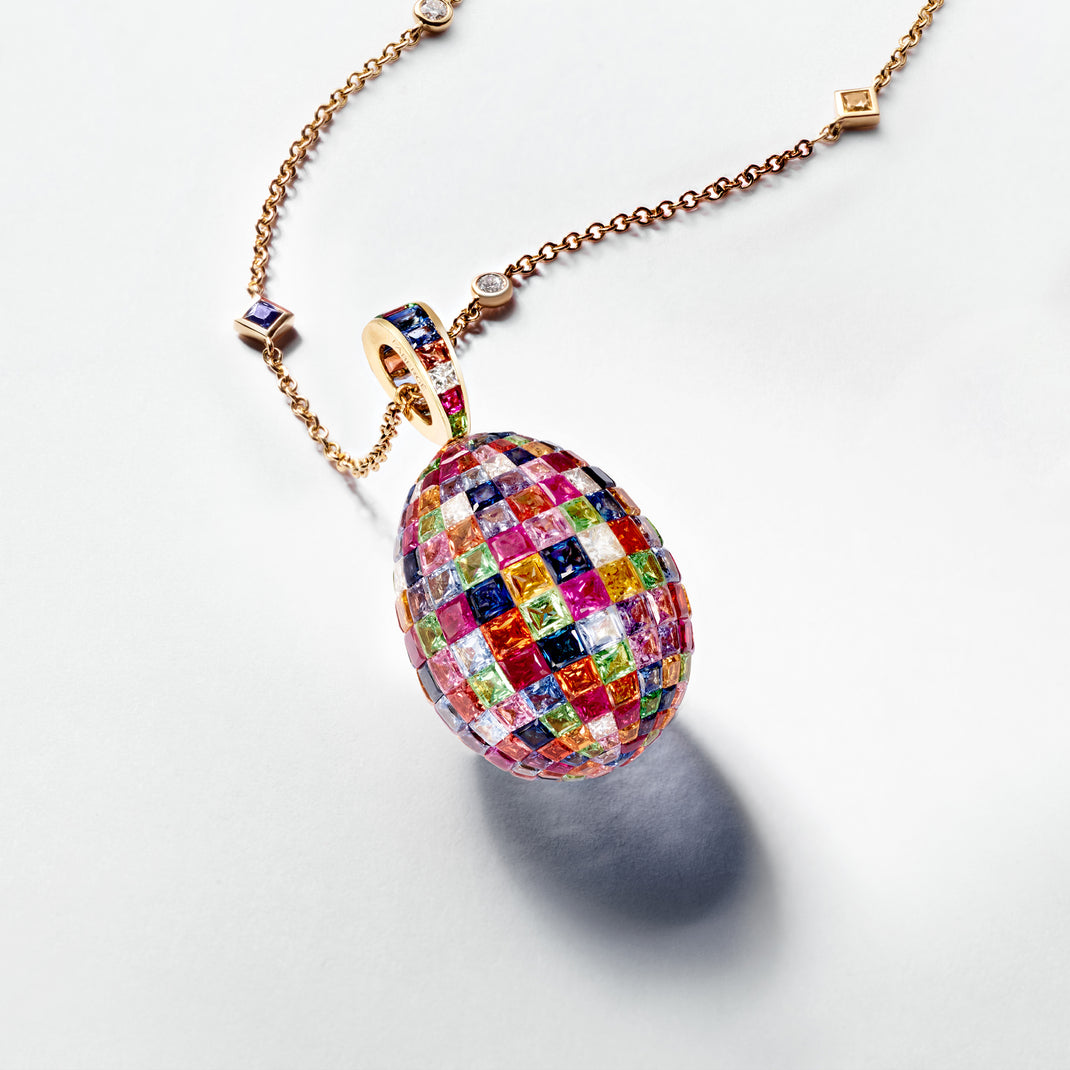
Imperial Collection
Mosaic Egg Pendant
In a compelling mix of impeccable craftsmanship and the finest gemstones, the Fabergé Imperial collection celebrates rhythms of the seasons. Exceptional white diamond, pearl and coloured gemstone pieces demonstrate the superlative Fabergé hand artisanship.
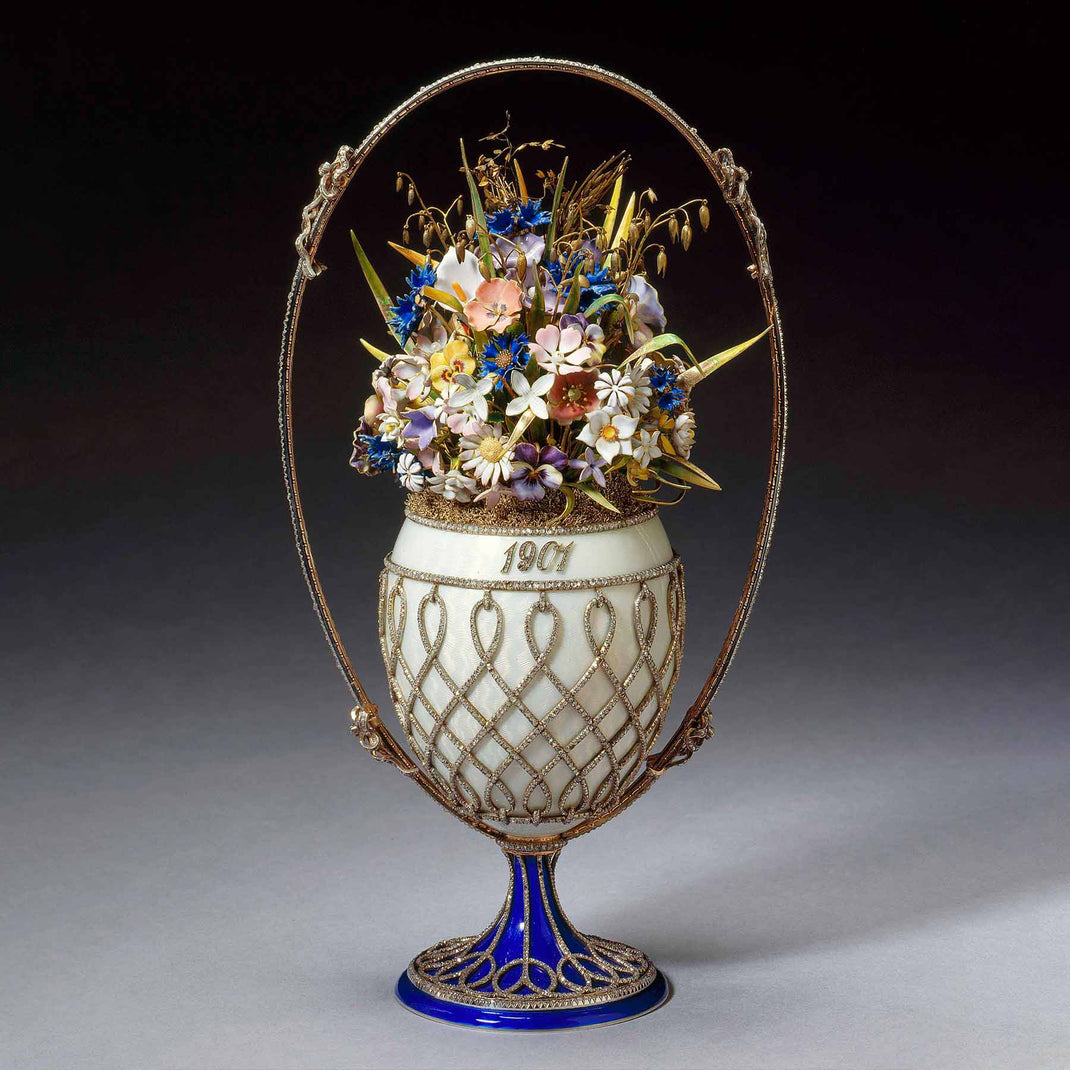
Image courtesy of The Royal Collection
1901
The Basket of Flowers Egg
Imperial Easter egg, basket-shaped, silver-gilt and oyster guilloché enamel mounted with rose diamond trellis and oval handle with four bows, blue enamel splayed base with rose diamond trellis. Egg contains wild flowers, leaves and husks of enamel on gold. The Tsarina kept the egg in her study at the Winter Palace. Each of the 50 Imperial Easter Eggs made by Fabergé was unique, its design and execution of the highest possible standard using the finest raw materials. The bouquet of wild spring flowers would have particularly appealed to Tsarina Alexandra, who owned several of Fabergé’s flower studies.
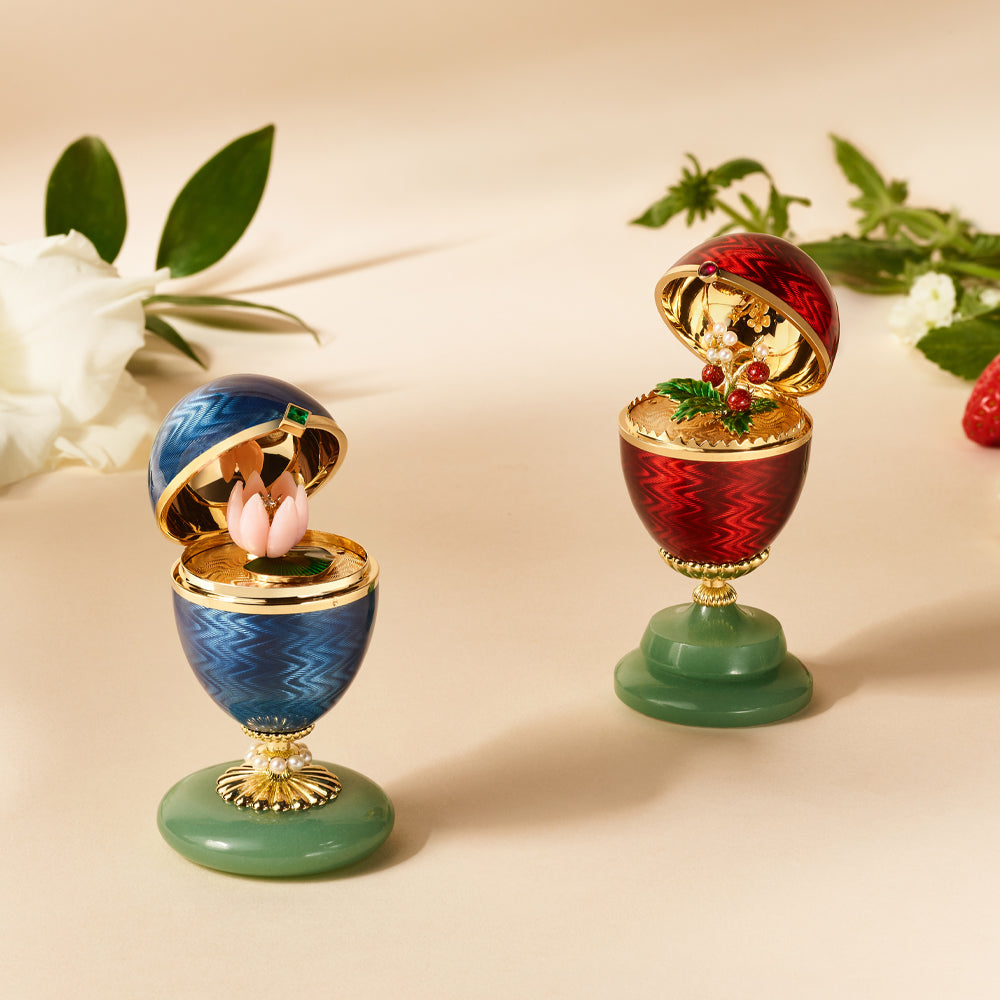
Heritage
In Bloom
Introducing two limited-edition eggs to our objet d’art collection, which pay homage to our rich heritage, fusing the iconic egg with the iconic flower studies for which Peter Carl Fabergé was renowned. The Fabergé Wild Strawberry Egg and Fabergé Water Lily Egg are each destined to become future heirlooms and - limited to just 10 numbered editions per design - are collectors’ pieces which truly celebrate the beauty of nature and the past, present, and future of Fabergé.
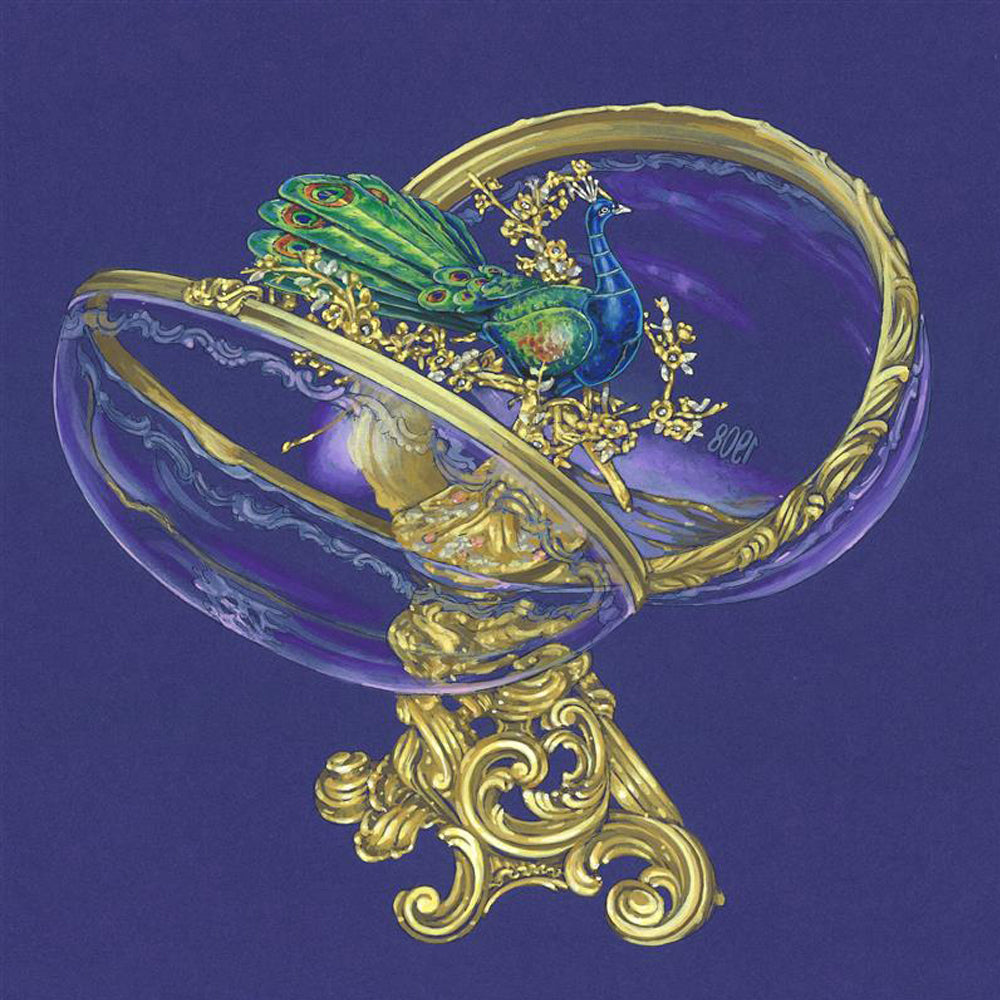
1908
The Peacock Egg
The Peacock Egg features a transparent egg, placed horizontally, both its halves carved from rock crystal, each set into a heavy mount with a clasp. One half is inscribed with the monogram of Maria Fedorovna, the other with the year 1908. Inside, a peacock in multi-color enamel is poised amid the branches of a golden tree, strewn with flowers of precious stones and enamel. The mechanical bird can turn its head and spread its tailfeathers.
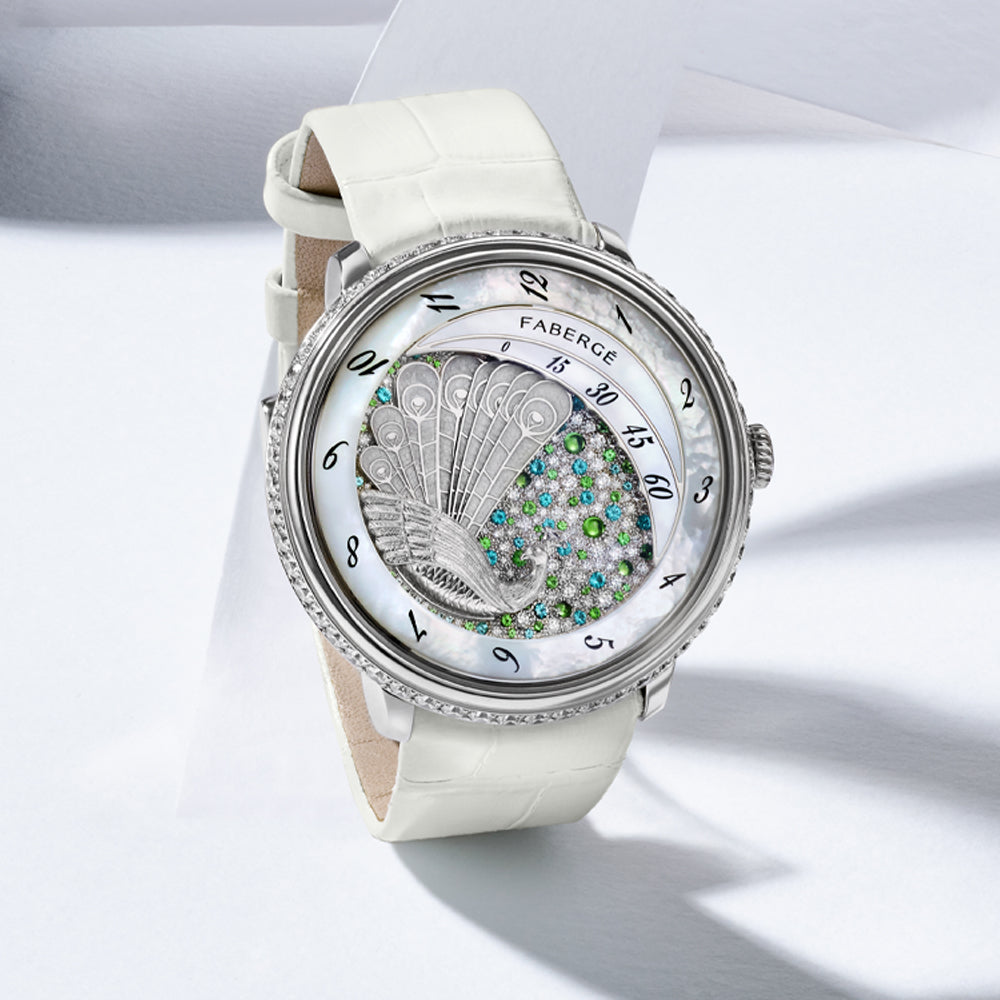
Compliquée
Peacock Watch
The Compliquée Haute Horlogerie collection upholds Peter Carl Fabergé’s tradition of surprise and meticulous execution with a new and spectacular time display, which won the prestigious 2015 Grand Prix d’Horlogerie de Genève (GPHG) – the Swiss watchmaking industry’s highest honour – in the ‘High-Mechanical’ category. The highly original display of the collection features a fan at the heart of the watch, a movement exclusively developed for Fabergé by Agenhor Manufacture. It thus perpetuates the ingenious and freethinking spirit of Peter Carl Fabergé; the display in the Compliquée Peacock timepiece pays homage to the famous “Peacock Egg” of 1908.


















